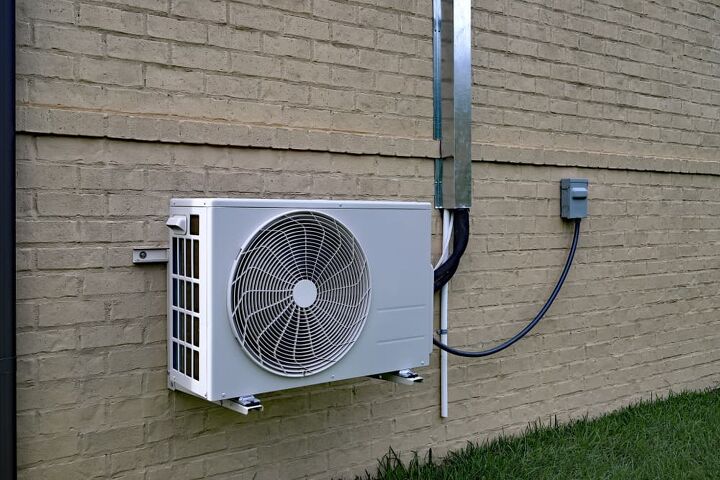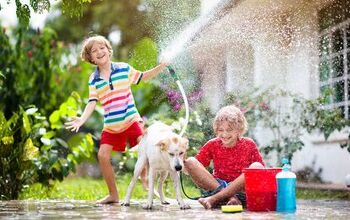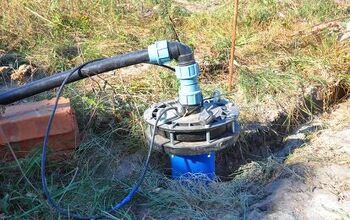How Often Should A Heat Pump Cycle On And Off? (Find Out Now!)

The heat pump, which is part of your heating and cooling system, is generally installed outside the home. It is similar to an air conditioner in that it can actually cool your home. The main difference is that it can heat, and a heat pump should cycle on and off.
It is normal for a heat pump to cycle on and off 2 to 3 times per hour and remain on for between 10 and 20 minutes. If outside temperatures are 30 to 40 degrees or lower, the heat pump will stay on continuously to maintain the home’s temperature. When the unit turns on and off too often, it could indicate a dirty condenser or air filter, low refrigerant levels, or other issues.
Do You Need Heat Pump Repair or Service?
Get free, zero-commitment quotes from pro contractors near you.

Is My Heat Pump Supposed To Cycle On And Off?
Depending on the type of heating and cooling system you have installed, it can be in different places. For example, central heating and air tend to be installed in the home. However, a heat pump is installed on the outside of the home.
Think About How Heat Pumps Work
Contrary to popular belief, heat pumps do not actually create heat. They take the heat from the air and ground, redistributing it along the way. It makes use of a refrigerant that circulates between the outdoor compressor and the indoor fan coil (also known as the air handler) in order to transfer heat.
The interesting thing is that a heat pump is capable of heating as well as cooling. During the cooler months, it pulls heat from the outdoor air and moves it inside.
The inverse is true in the warmer months of the year. When the heat pump is in cooling mode, the pump will absorb the heat from your home and then transfer and release it outside. When in heating mode, the pump absorbs the heat from the air (even cold air) or the ground and then distributes it indoors. Once your home reaches the desired temperature, it’s normal for the heat pump to shut off to conserve energy.
Two Main Types Of Heat Pumps
There are two primary types of heat pumps.
- Air-source. Air-source heat pumps are popular for residential purposes. They transfer the heat between the indoor and outdoor air. These are the most common type of heat pumps that you will find. Air-source heat pumps can be a little less efficient since they depend on the temperature of the air. The air temperature can fluctuate wildly throughout the year, depending on the season.
- Ground-source. These are also known as geothermal heat pumps. They take the heat inside of your home as well as the ground outside and transfer it in and out. These are generally a little more expensive to install but can be much more efficient. Ground-source heat pumps also tend to have a lower operating cost since the ground has a more consistent temperature throughout the year.
Having a heat pump can be helpful to homeowners since they don’t need to install separate systems. A heat pump can be particularly effective for a smaller home since it is installed outdoors.
How Long Should My Heat Pump Cycle On Before Turning Off?
When starting up a heat pump, it will need to complete a defrost. The defrost process means that the heat pump will run for about 35 minutes or so. Defrosts going forward should not take anymore than 35 minutes.
When a heat pump cycle is in effect, it should take about 10-20 minutes to complete before turning off again. This means that it’s normal for a heat pump to cycle two to three times in one hour. If the heat pump either takes much longer per cycle or tends to cycle more often, it could be indicative of a greater issue with the heat pump or other components.
Is It Normal For Heat Pumps To Run Continuously?
In colder months, it’s common for heat pumps to run constantly. When outside temperatures drop to 30 to 40 degrees or below, your pump will work overtime to maintain your home’s toasty temperature. Therefore, during these frigid times of the year, you likely won’t notice your heat pump cycle on and off very much.
Heat pumps tend to do better in milder climates where the temperatures don’t drop below the freezing point. Keep in mind that you can combine them with a furnace in colder areas. The combination becomes more energy-efficient heating except in the most extreme of colds.
With the furnace, the heat pump will defer when the temperature outside gets to be too cold. This is a dual fuel system. In colder climates, it is cost-effective and can be very energy efficient.
But if your heat pump is running constantly during the summer months, this could signal a problem. The best course of action is to call a professional to assess your heat pump.
Troubleshooting When Your Heat Pump Cycles On And Off
For the most part, homeowners like heat pumps because they tend to be more efficient and can save space in smaller homes. But just like any other piece of equipment, there are internal errors that can make them run improperly or inefficiently.
Should the heat pump turn off and on continuously, known as short cycling, there are several possible outcomes. The first is a significant increase in your energy bills. The second is damaged components, which can lead to either repairs or replacements altogether.
The heat pump struggles to cool or heat your home, and because it can’t maintain the temperature that you have set, it restarts again and again. If you notice your heat pump cycle on and off frequently, it could be a number of issues.
Clogged Air Filter
The air filter plays an important role in the functionality of your heat pump. Not only does it regulate air quality, but it can cause a number of issues when dirty or clogged. Should you experience issues with your heat pump, start by checking out the air filter.
When the filter is clogged, it restricts airflow. That means that the heat pump can’t circulate the proper amount of air needed to cool or heat your home. Depending on how dirty the filter is, you may be able to clean the filter, or you may need to replace it entirely.
Regular maintenance and cleaning are a great way to prevent issues with both the air filter and in general. It is a good rule of thumb to change out the air filter on a monthly or bi-monthly basis. Anything more than that, and you run the risk of a plethora of issues.
Incorrect Thermostat Settings
It would probably surprise you to know how often heating and cooling issues revolve around thermostat settings. The thermostat could be providing inaccurate readings either because of improper settings or through a malfunction.
Depending on the thermostat’s location, there could be a miscommunication between the thermostat and the heat pump. Generally speaking, if you have a thermostat near a window or vent, you will get misleading temperatures that cause a short cycle.
Faulty wiring may also be the issue. If you can’t stop the short cycling by changing the settings on the thermostat, consider bringing in a professional or replacing it altogether.
Leaking Refrigerant
When temperatures soar and it gets hot outside, refrigerant is meant to capture heat in your home and send it outside. When temperatures drop, meanwhile, it takes the heat from outside, pressurizes it, and distributes it into the home.
In the instance of a refrigerant leak, the system can’t produce that heat transfer properly. When it can’t complete the heat transfer, heating and cooling become a challenge. It can even lead to inefficient or incomplete cycling.
A telltale sign is when you see ice on your outdoor heat pump unit. In most cases, that is indicative of a refrigerant leak. These can be dangerous to handle. If you think that a leak is the issue, bring in a professional to take care of the job.
Bad Controller Board
The system that oversees your home’s HVAC system could also be bad. It typically communicates with your thermostat to let it know to heat or cool, etc. If this is the culprit you need to call a professional to replace the control board.
Oversized Unit
This is arguably the most serious issue your heat pump may face, as it could mean replacing the unit entirely. When the unit is not the right size for your home, it will struggle to perform the heating and cooling tasks effectively.
A mid-sized unit will often cycle on and off repeatedly, indicating an issue in the system. It can be difficult for an amateur to know when the system is mid-sized; it will require professional inspection to determine.
Other Signs That Your Heat Pump Is Bad
If you’re having trouble with your heat pump, you might also notice other signs besides short cycling.
- Higher energy bills — Your heat pump has to work overtime when it shouldn’t.
- Noisy heat pump — this could signal a bad fan motor or just loose components that need tightening. (When loose, they’ll vibrate and cause noise when the heat pump runs).
- Smells — bad smells could indicate leaking refrigerant or a bad motor.
- Blowing hot air in the summer — Again, this could be a bad fan or a faulty reversing valve. The reversing valve changes the direction of the refrigerant within the system. That change of direction allows for the shift between cooling and heating.
- Broken Condenser Fan — There could be a short somewhere, or you might need to replace the capacitor.
- Not Blowing Warm Air — You might just need to adjust your thermostat, or the reversing valve could be struggling. If the blower isn’t working at all, there could be a short, or your heat pump is at the end of its life.
Do You Need Heat Pump Repair or Service?
Get free, zero-commitment quotes from pro contractors near you.

What Is The Best Temperature To Set My Heat Pump To?
Setting your heat pump to 68 degrees is the best for the most efficiency. At 68 degrees, most homes will get a steady airflow through the house. If you feel like your home is too hot, you could lower the heat pump one or two degrees and still be comfortable.
Likewise, if you feel too cool at 68 degrees, you could bump it up one or two degrees. In the winter, you might want to set it closer to 70 or 72 degrees.
But, consider your clothing before you change the setting. Can you feel warm enough by keeping your heat pump at 68 and throwing on a sweater? If so, you can save on energy costs.
So, the best temperature for your heat pump will be the one that makes you the most comfortable. However, you should avoid setting the heat pump to over 80 degrees. You’ll see a significant increase in your utility bills, plus your heat pump will end up working overtime.
In Conclusion
Setting your heat pump to 68 degrees is the most efficient option in most settings. Going down or up a few degrees to find the setting that is most comfortable is fine. But, no matter the setting, your heat pump should cycle on and off about 2 to 3 times per hour.
When it’s running, it should stay on for between 10 and 20 minutes before turning off again. If it’s very cold outside (below 40 degrees), it’s normal for a heat pump to run continuously.
However, if your heat pump is short cycling, there could be several issues, like low refrigerant, a dirty air filter, or more significant problems. If basic troubleshooting doesn’t solve the issue, call in a professinal.

Ryan Womeldorf has more than a decade of experience writing. He loves to blog about construction, plumbing, and other home topics. Ryan also loves hockey and a lifelong Buffalo sports fan.
More by Ryan Womeldorf



















![Standard Dining Room Table Dimensions [for 4, 6, 8, 10 and 12 People]](https://cdn-fastly.upgradedhome.com/media/2023/07/31/9074335/standard-dining-room-table-dimensions-for-4-6-8-10-and-12-people.jpg?size=350x220)







